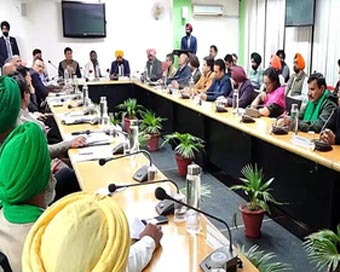 PM Modi visit USA
PM Modi visit USA Only the mirror in my washroom and phone gallery see the crazy me : Sara Khan
Only the mirror in my washroom and phone gallery see the crazy me : Sara Khan Karnataka rain fury: Photos of flooded streets, uprooted trees
Karnataka rain fury: Photos of flooded streets, uprooted trees Cannes 2022: Deepika Padukone stuns at the French Riviera in Sabyasachi outfit
Cannes 2022: Deepika Padukone stuns at the French Riviera in Sabyasachi outfit Ranbir Kapoor And Alia Bhatt's Wedding Pics - Sealed With A Kiss
Ranbir Kapoor And Alia Bhatt's Wedding Pics - Sealed With A Kiss Oscars 2022: Every Academy Award Winner
Oscars 2022: Every Academy Award Winner Shane Warne (1969-2022): Australian cricket legend's life in pictures
Shane Warne (1969-2022): Australian cricket legend's life in pictures Photos: What Russia's invasion of Ukraine looks like on the ground
Photos: What Russia's invasion of Ukraine looks like on the ground Lata Mangeshkar (1929-2022): A pictorial tribute to the 'Nightingale of India'
Lata Mangeshkar (1929-2022): A pictorial tribute to the 'Nightingale of India' PM Modi unveils 216-feet tall Statue of Equality in Hyderabad (PHOTOS)
PM Modi unveils 216-feet tall Statue of Equality in Hyderabad (PHOTOS)India Open Competition in Shotgun, organised by the National Rifle Association of India (N
- Hockey India names Amir Ali-led 20-man team for Junior Asia Cup
- Harmanpreet Singh named FIH Player of the Year, PR Sreejesh gets best goalkeeper award
- World Boxing medallist Gaurav Bidhuri to flag off 'Delhi Against Drugs' movement on Nov 17
- U23 World Wrestling Championship: Chirag Chikkara wins gold as India end campaign with nine medals
- FIFA president Infantino confirms at least 9 African teams for the 2026 World Cup
Modi govt’s progressive efforts for Punjab’s farmers and ecology Last Updated : 22 Feb 2024 01:45:53 PM IST 
Modi govt’s progressive efforts for Punjab’s farmers and ecology During the talks between the Centre and the farm unions from Punjab on February 18, the Narendra Modi government proposed a unique solution where it was willing to enter into an agreement with the farmers of Punjab on five crops -- cotton, maize, tur, urad, masur.
The idea was to help farmers diversify away from wheat and paddy, both water-intensive crops, and to cushion and monetarily secure their transition for the next five years. The agreement was to be done through government agencies (CCI, NAFED, etc.). There was no upper limit on the quantum of crops that would have been procured.
From an ecological perspective, this was ideal for Punjab, where the groundwater levels have alarmingly depleted. Of the 138 assessed blocks in Punjab, stated in the Dynamic Groundwater Resources Assessment of India - 2017 report, 109 are over-exploited, two as critical, five as semi-critical, and only 22 as safe.
The total annual groundwater recharge of the state was assessed as 23.93 bcm (billion cubic metres), annual extractable groundwater resource was 21.59 bcm. Still, the annual groundwater extraction was at 35.78 bcm, putting the extraction at 166 per cent, the highest for any state in India. Even for Rajasthan, it’s less than 140 per cent.
For a small farmer, the cost of extracting groundwater has increased in the last few years, and therefore, by moving away to crops that were not water-intensive, the input costs would have reduced.
Punjab’s majority area is under wheat and paddy cultivation (85 per cent in 2020-21). Therefore an ecosystem (market, buyers, logistics, input supplies, etc.) for cotton, pulses, and maize is not as significant, therefore warranting government support for the farmers, as they entered into a new phase of agriculture.
In terms of area under cultivation, Maize makes up for 1.5 per cent, Cotton is 3.2 per cent, and pulses merely 0.4 per cent. For farmers, moving towards these crops would have unlocked new markets and buyers, especially in the private sector, thus allowing them more options to sell their produce, even to the private players, at will.
By rejecting the offer from the Centre, the farm unions have staked the long-term interests of Punjab’s farmers for their short-term interests. By not allowing them to move away from wheat and paddy, not only are these unions barring farmers from exploring new markets, but also adding to the groundwater stress that will push up the input costs for the farmers. Eventually, it could even make some belts unfit for paddy and wheat cultivation in a few years, further hurting the small and marginal farmers.
Farm unions, majorly made up of brokers, or 'arhtiyas', as they are locally known, are also prioritising their hefty commissions that they earn from the trade of wheat and paddy at APMC mandis. More than the price for the farmers, it is about securing the commission of the middlemen, at the cost of Punjab’s hardworking farmers and ecology.IANS New Delhi For Latest Updates Please-
Join us on
Follow us on








172.31.16.186







